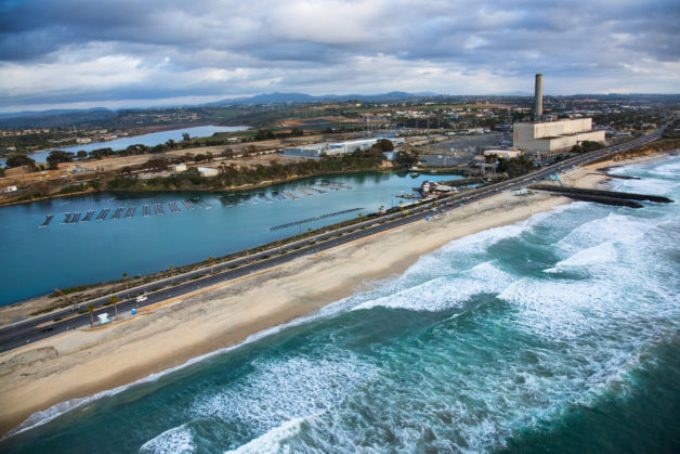Aug 1 2019
As population explosion and prolonged droughts continue, coastal cities like Carlsbad in Southern California have gradually opted for ocean desalination to make up for a declining freshwater supply.
 The Claude “Bud” Lewis Carlsbad Desalination Plant near U.S. Route 101 (the Pacific Coast Highway) in the northern portion of San Diego County; Carlsbad, California. (Image credit: Art Wager/iStock)
The Claude “Bud” Lewis Carlsbad Desalination Plant near U.S. Route 101 (the Pacific Coast Highway) in the northern portion of San Diego County; Carlsbad, California. (Image credit: Art Wager/iStock)
Recently, researchers at the Department of Energy’s Lawrence Berkeley National Laboratory (Berkeley Lab) who have been exploring how to make desalination less costly have discovered promising design rules for enabling so-called “thermally responsive” ionic liquids to separate water from salt.
Ionic liquids are liquid salts that bind to water, rendering them beneficial in forward osmosis to isolate contaminants from water. A better option would be thermally responsive ionic liquids as they use thermal energy instead of electricity, which is essential for conventional reverse osmosis (RO) desalination for the separation.
The new Berkeley Lab research, reported recently in the journal Nature Communications Chemistry, examined the chemical structures of numerous types of ionic liquid/water to establish what “recipe” would be suitable.
“The current state-of-the-art in RO desalination works very well, but the cost of RO desalination driven by electricity is prohibitive,” said Robert Kostecki, study’s co-corresponding author. “Our study shows that the use of low-cost ‘free’ heat—such as geothermal or solar heat or industrial waste heat generated by machines—combined with thermally responsive ionic liquids could offset a large fraction of costs that goes into current RO desalination technologies that solely rely on electricity.”
Kostecki, deputy director of the Energy Storage and Distributed Resources (ESDR) Division in Berkeley Lab’s Energy Technologies Area, collaborated with co-corresponding author Jeff Urban, a staff researcher in Berkeley Lab’s Molecular Foundry, to explore the performance of ionic liquids in water at the molecular level.
Applying nuclear magnetic resonance spectroscopy and dynamic light scattering offered by scientists in the ESDR Division, as well as molecular dynamics simulation methods at the Molecular Foundry, the team came across a surprising finding.
It was long believed that a successful ionic liquid separation depended upon the overall ratio of organic components (parts of the ionic liquid that are neither positively nor negatively charged) to its positively charged ions, explained Urban. But the Berkeley Lab team learned that the number of water molecules an ionic liquid can separate from seawater relies on the closeness of its organic components to its positively charged ions.
This result was completely unexpected. With it, we now have rules of design for which atoms in ionic liquids are doing the hard work in desalination.
Jeff Urban, Study Co-Corresponding Author and Staff Researcher, Molecular Foundry, Berkeley Lab
A decades-old membrane-based reverse osmosis technology initially created at UCLA in the 1950s is experiencing rebirth—presently there are 11 desalination plants in California, and more have been recommended. Berkeley Lab researchers, through the Water-Energy Resilience Research Institute, are following a range of technologies for enhancing the dependability of the U.S. water system, including modern water-treatment technologies such as desalination.
Since forward osmosis uses heat in place of electricity, the thermal energy can be supplied by renewable sources such as solar and geothermal or industrial low-grade heat.
Our study is an important step toward lowering the cost of desalination. It’s also a great example of what’s possible in the national lab system, where interdisciplinary collaborations between the basic sciences and applied sciences can lead to creative solutions to hard problems benefiting generations to come.
Robert Kostecki, Study Co-Corresponding Author and Deputy Director of ESDR Division, Energy Technologies Area, Berkeley Lab
Scientists from UC Berkeley and Idaho National Laboratory also contributed to this study. The Molecular Foundry is a DOE Office of Science User Facility that focuses on nanoscale science. This study was supported by the U.S. Department of Energy’s Office of Energy Efficiency and Renewable Energy.